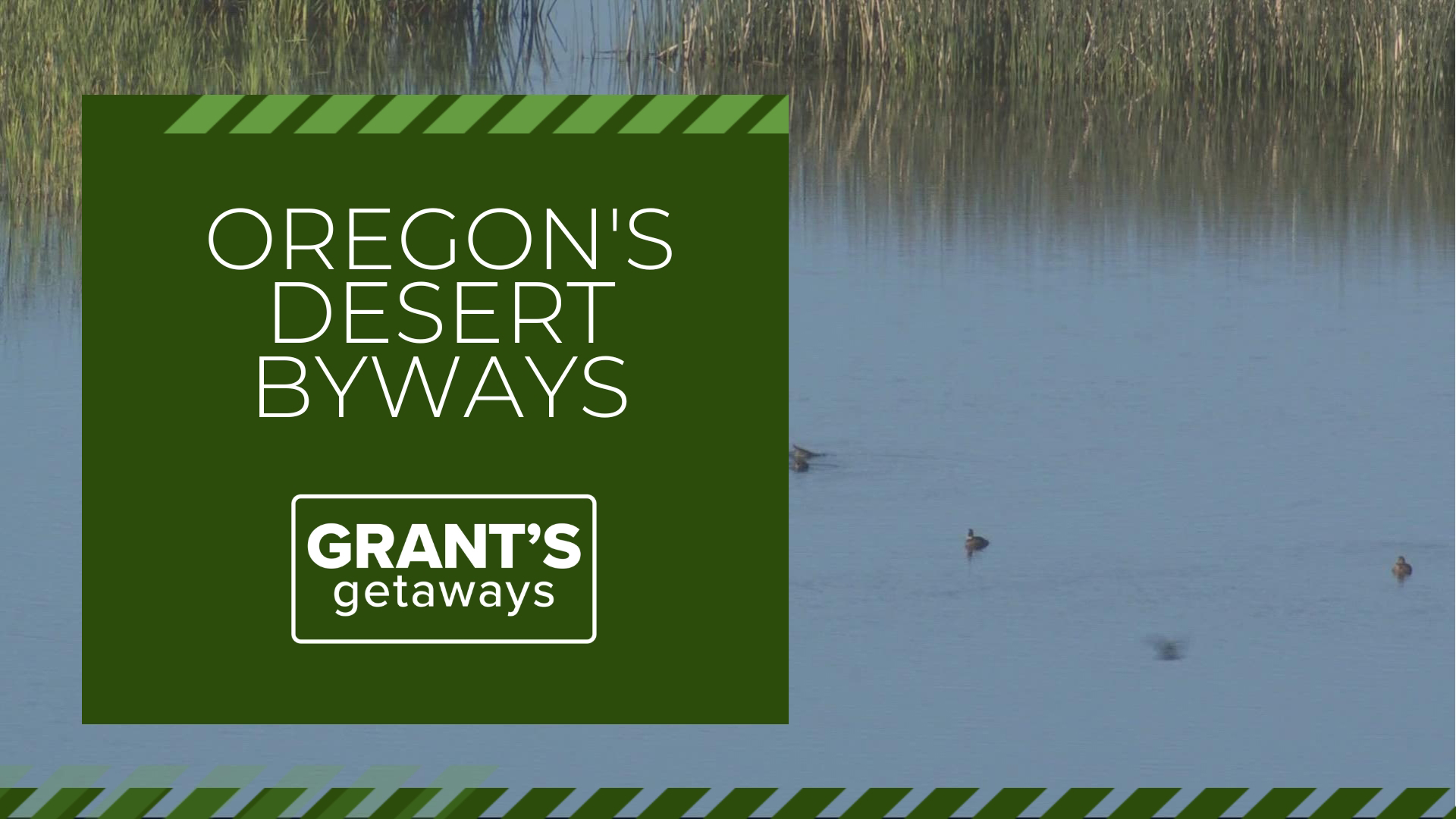BURNS, Ore. — We head east of the Cascades in this week’s getaway to discover the springtime coolness that washes across the high desert and creates a wildlife mecca.
At the Malheur National Wildlife Refuge near Burns, Oregon you can begin to build your own family memories by letting the voice on the radio guide you across new territory that will take your breath away.
Tom Hall is that voice, the man who recorded a unique audio tour guide to help you discover a wildlife wonderland in Southeast Oregon.
It’s a CD that you can check out anytime and enjoy a personalized tour of the Malheur National Wildlife Refuge where distances are great and people are few.
“Everything on the Malheur Wildlife Refuge tends to be in movement this time of year,” noted Hall, a longtime refuge volunteer. “It is constant motion out here and the trick for the visitor is to catch up with the wildlife to see and learn more. The cd gives the visitor an extra edge to enjoy the place.”
Tom and his wife Sally Hall have helped visitors explore the refuge each summer for the past five seasons at the U.S Fish and Wildlife’s visitor station at Malheur Refuge.
“It’s the variety of birds, the landscape and the people who come to visit,” added Tom Hall. “It’s all interesting.”
Tom’s advice: bring binoculars and a bird identification book because the sheer number and variety of nesting birds is staggering.
“You will easily see forty or fifty different species on a spring-summer weekend,” noted Hall. “A bird book is a good thing because you’re going to see a lot of unusual birds like avocets, stilts, white-faced ibis and then plentiful waterfowl like redheads, mallards, canvasbacks. We have an island of pelicans where there will be ten-twenty thousand white pelicans rafted up together. It’s incredible to see so many birds and so many species too.”
Spring’s coolness washes over this remote rimrock country where history hangs around longer than most places.
Piute Indians lived off the land 11,000 years ago. They moved between Malhuer and Harney Lakes with the seasons.
The native peoples were followed by relative newcomers in the 19th century: miners, trappers and pioneers who settled, scratched out a living and built towns that rose above the desert.
Signs of those times are still visible too – at a place where western hospitality is served daily at the Frenchglen Hotel.
Built in early years of the 20th century, Frenchglen Hotel wasn’t designed for luxury but as a rest stop for travelers on the long journey across the high desert.
So, the bedrooms are small but the hospitality is huge and warm in the family style dining area where three meals a day are prepared and served to visitors who choose to enjoy a more laid back vacation stay.
John Ross said the hotel is an Oregon State Park and you will not find phones, radios or tv at the Frenchglen Hotel.
“We are remote and the country is rugged, but we try to offer a bit of homey comfort that tends to attract a certain visitor who enjoys all of that.”
Nearby, the Peter French Round Barn Heritage Site is another state park and a must-stop for visitors who want to explore a one of a kind barn design.
Designed and built in 1880 by Peter French, a cattle baron who built a sprawling empire that dominated the region for more than 25 years, several giant juniper posts support a stable while an outer circular track lined in stonework provided a wintertime exercise area for horses.
Ross added, “There were three round barns at one time, but this one is all that’s left and it has been well preserved and maintained by the State Parks folks. We’re lucky to have them.”
Just down the road, you can stroll even further back in time at Diamond Craters Outstanding Natural Area, a BLM managed site that is spread across 17,000 acres.
Oregon’s roadside geology is worth a pause to consider at ‘Diamond Craters’ where you can easily imagine a time, many thousands of years ago, when lava exploded, churned and oozed out of the ground during a period that lasted for more than 15,000 years.
It is a geologic wonder that will connect you with an interesting chapter of Oregon’s volcanic past.
In fact, there’s so much to see in this timeless landscape where distances are great, people are few and Tom Hall insisted visitors must bring one thing with them when they come:
“Patience! You cannot come here in a day and take all this in – you cannot take it all in a weekend. Sally and I have been here five years and there’s still so much to see. Plenty to enjoy outdoors in the wide-open spaces.”
Be sure to follow my Oregon adventures via the new Grant’s Getaways Podcast: Each segment is a story-telling session where I relate behind the scenes stories from four decades of travel and television reporting.
You can also learn more about many of my favorite Oregon travels and adventures in the Grant’s Getaways book series, including:
"Grants Getaways I," Photography by Steve Terrill
"Grant's Getaways II," Photography by Steve Terrill
“Grant’s Getaways: 101 Oregon Adventures,” Photography by Jeff Kastner
“Grant’s Getaways: Guide to Wildlife Watching in Oregon,” Photography by Jeff Kastner
“Grant’s Getaways: Oregon Adventures with the Kids,” Photography by Jeff Kastner
The collection offers hundreds of outdoor activities across Oregon and promises to engage a kid of any age. My next book, “Grant’s Getaways: Another 101 Oregon Adventures” will be published in November.

